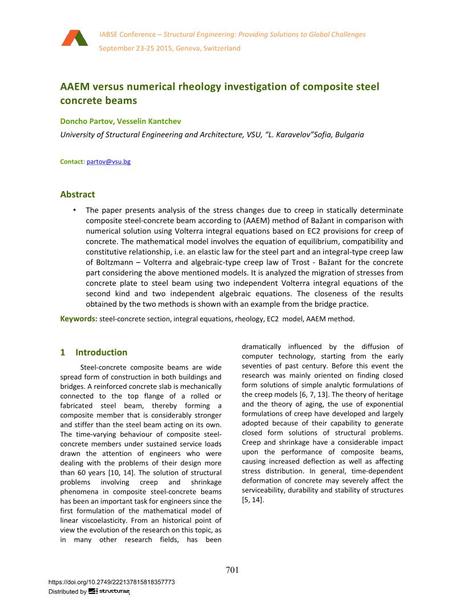| Medium: |
Tagungsbeitrag |
| Sprache(n): |
Englisch
|
| Tagung: |
IABSE Conference: Structural Engineering: Providing Solutions to Global Challenges, Geneva, Switzerland, September 2015 |
| Veröffentlicht in: |
IABSE Conference Geneva 2015 |
|
Seite(n):
|
701-708
|
Anzahl der Seiten (im PDF): |
8 |
|
|
Seite(n):
|
701-708
|
| Anzahl der Seiten (im PDF): |
8 |
| Jahr: |
2015 |
| DOI: |
10.2749/222137815818357773 |
|
Abstrakt:
|
-
The paper presents analysis of the stress changes due to creep in statically determinate composite steel-concrete beam according to (AAEM) method of Bažant in comparison with numerical solution using Volterra integral equations based on EC2 provisions for creep of concrete. The mathematical model involves the equation of equilibrium, compatibility and constitutive relationship, i.e. an elastic law for the steel part and an integral-type creep law of Boltzmann – Volterra and algebraic-type creep law of Trost - Bažant for the concrete part considering the above mentioned models. It is analyzed the migration of stresses from concrete plate to steel beam using two independent Volterra integral equations of the second kind and two independent algebraic equations. The closeness of the results obtained by the two methods is shown with an example from the bridge practice.
|
|
Stichwörter:
|
Rheologie
|

